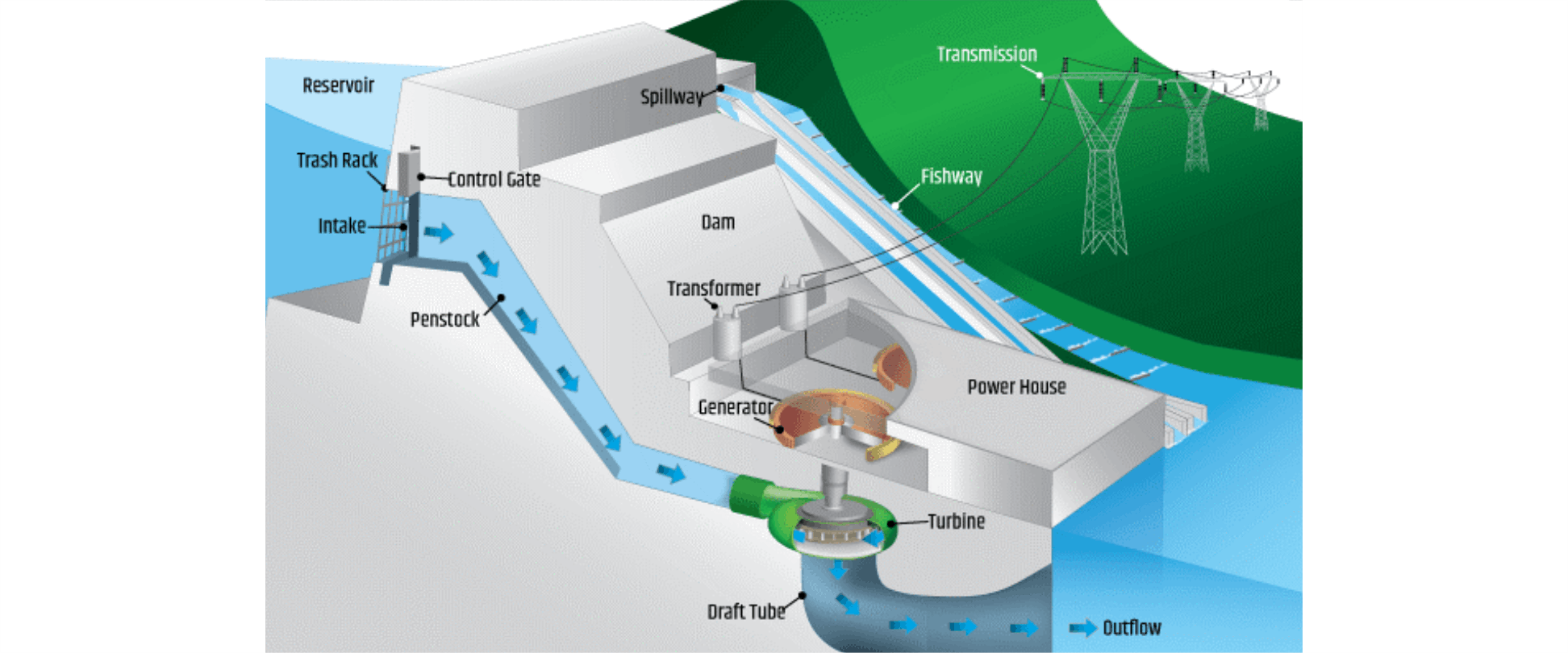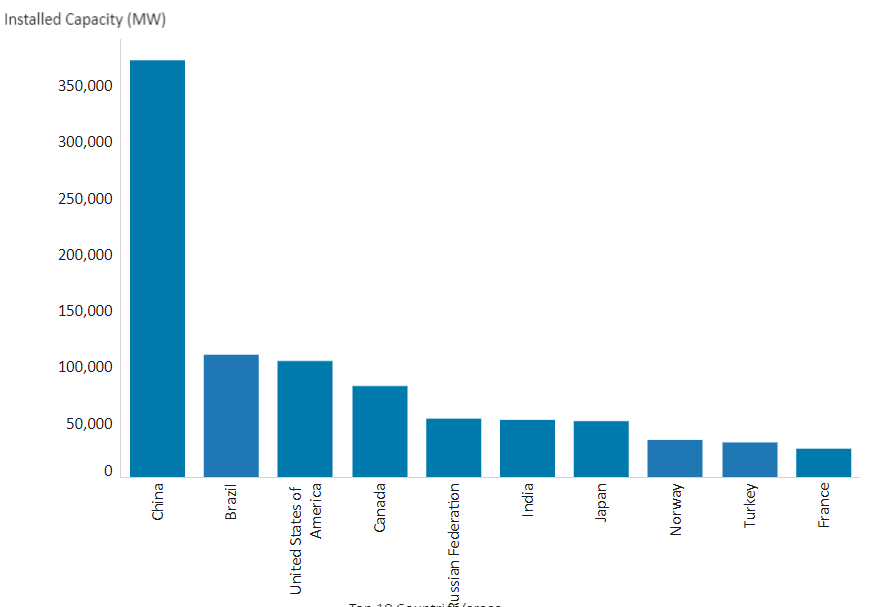Hydropower is the most widely used renewable energy source in the world, in addition to being a clean energy source. Hydropower is a renewable energy source that generates electricity from dams or flowing water created by altering the natural course of a river or other body of water.
Hydropower relies on the endless, constantly recharging system of the water cycle and the amount of energy generated varies with the speed of the water flow. The volume of water flow or the change on height in a water basin determines the amount of energy available in the flowing water.
Hydropower technologies
Hydroelectric power plants (HPPs) are a complex of electromechanical devices and equipment necessary to convert potential hydroelectric energy, i.e., the kinetic energy of water, into electrical energy and operate 24 hours a day. Turbines and generators are used to convert this kinetic energy into electricity. It is always possible to generate electricity due to the constant flow of water circulating in the hydroelectric power plants.

The principle of operation of a hydroelectric power plant is quite simple. A chain of hydraulic structures brings the moving water at the end of the hydraulic turbine to the required pressure, and the moving water mass is transferred to generators that generate electricity. The necessary water pressure is created by the construction of a dam and by the concentration or diversion of the river in certain places. In some cases, dams and diversions are used together to obtain the required water pressure. Depending on the utilization form, three types of hydroelectric power plants are distinguished:
Impoundment facility: In an impoundment facility, a dam is used to control the flow of water stored in a pool or reservoir. When more energy is needed, water is released from the dam. Once water is released, gravity takes over and the water flows downward through a turbine. As the blades of the turbine spin, they power a generator.

Source: https://www.energy.gov/
Diversion facility: This type of plant is unique because it does not use a dam. Instead, it uses a series of canals to channel flowing river water toward the generator-powering turbines.

Source: https://www.energy.gov/
Pumped-storage hydropower facility: This plant stores energy by pumping water uphill. When there is high demand for electricity, water located in the higher pool is released, as this water flows back down to the lower reservoir, it turns a turbine to generate more electricity.
Hydropower worldwide
Among renewable energy sources, hydroelectric power plants have the largest production capacity in the world. According to IRENA's “Renewable Capacity Statistics 2021” report, the installed capacity of hydroelectric power plants, excluding pumped storage hydropower facilities, is 1211 GW, which contains 43% of the installed capacity of renewable energy stations in the world. About 71% of all renewable electricity produced on Earth comes from hydropower.
The world's leading producers of hydroelectric power are China, Brazil, the United States, Canada and Russia.

Source: IRENA




